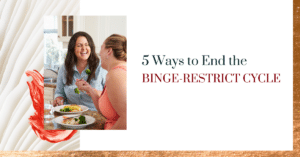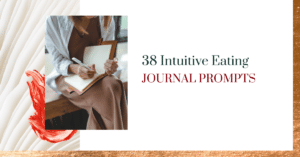How Do Makeup & Beauty Products Relate to Body Image?

Having a positive body image doesn’t mean that you stop caring about your appearance. But what it means is that you have a choice about which beauty ideals you partake in, and which you don’t. Learn more about the history of body image and beauty ideals and how to redefine what beauty means to you.

Someone asked me recently, “Can I have a positive body image and still want to use anti-aging cream or wear makeup?”
My answer: Yes! You can certainly have a positive body image and accept your body and still use anti-aging cream or makeup.
The problem occurs if you are using beauty products to cover up a poor body image and if you are reliant on wearing makeup or doing your hair in order to feel “normal” and “ok”.
When we work on healing our body image, part of this work involved redefining our idea of what beauty is. Because the beauty ideals that we strive for are actually a rigid, narrow ideal that was dreamed up by beauty companies (with the help of patriarchy and societal norms). It’s also important that we learn to reject these rigid beauty ideals and know that we are more than a body.
Beauty companies have long been in the business of selling a problem…which they happen to have the perfect product to fix. Using makeup and anti-aging products hasn’t always been an essential part of being a woman, just like manicured nails, white teeth and botox weren’t always standards of beauty.
The History of Beauty Ideals
Since the 1990’s, our body ideals (at least in North America and western countries) have stayed relatively stable, but prior to that what people thought of as “beautiful” or “the perfect body” varied considerably. Let’s run through a quick overview:
- Pre-20th century – ideal female body was voluptuous, rounded belly, full breasts and hips
- 1920’s – the tail end of the first wave of feminism, women wanting to break with conventional norms bound their chests to get the skinny, curveless body shape that was all the age
- 1940’s-50’s – the ideal female body was a glamorous housewife with an hourglass figure
- 1960’s-70’s – the second wave of feminism brought back the thin, androgynous body beauty ideal
- 1980’s – the era of Jane Fonda, Jazzercise and the powerful career woman who was slim but strong
- 1990’s – the beauty ideal was grunge aesthetic, ‘waif’ look, with women who were thin, pale and young-looking. Big breasts started to be popular, and breast augmentation rates in the US skyrocketed.
- 2000’s – today, the beauty ideal is similar to the 1990s but has gotten even more unattainable. We idealize bodies that are thin with big breasts and also but also a large butt and muscle definition.
How the Beauty Industry Affects Beauty Ideals
We see similar changing trends when we look at female grooming standards. Nowadays we are so used to really intense grooming – bright white teeth, perfectly smooth skin, thick eyebrows, contoured cheeks, puffy lips, perfectly chiseled noses. But this level of grooming is a recent development – watch any movie from the 80s or early 90s and you’ll see that even celebrities didn’t look like this!
Many of the things that we consider “flaws” today – like cellulite, gray hair, and wrinkles – weren’t considered flaws until advertisers made them out to be. Check out this list of beauty ideals – all of which were shaped by the beauty and advertising industries. Source: Beyond Beautiful book.
- Underarm hair: Women never thought of removing their armpit hair until 1915, when a group of companies selling hair-removal cream launched a four-year ad campaign to convince women that smooth underarms were the latest fashion must-have.
- Leg Hair: Up until the1930’s, most women didn’t shave their legs, or did so only sporadically. Then came the rise of pin-up girls, and legs became an object of male admiration. Advertisers rushed to position hair-free legs as an essential, and grow their customer base by convincing women that they needed to shave their legs.
- Cellulite: Dimples and bumps were considered a normal part of female flesh prior to 1973. That was the year when Vogue magazine introduced readers to the word – and thus it became another beauty standard to try to acheive.
- Manicures: These were not standard until Cutex, the first nail polish/cuticle remover company, ran ad campaigns that told women that they needed manicures in order to achieve a positive social standing. The ads said: “Embarrassed fingers that shrink from scrutiny…or charming fingers that seek the light”
- Gray hair: Most women didn’t die their hair until the 1940s, when Clairol (a hair dye company) ran ads that told women that their greys caused them to be “old” and “not fun”.
- Shiny white teeth: Watch any tv show or movie from the 90’s or earlier and you’ll see that everyone’s teeth was the normal bone-white color. The mid-90’s brought in-office teeth whitening products to the dentist’s office, and they advertised shiny, bright white teeth as the new must-have.
- Wrinkles: Before botox and fillers, fine lines on the forehead, around the eyes, and indents around the mouth were considered normal.
Beauty Ideals and Body Image
Once you understand how the female standards of beauty came to be, you can then decide for yourself if you want to partake in them or not.
You understand and internalize that you don’t need makeup to feel beautiful or attractive or worthy, because you know that being beautiful is not the most important thing and that you are worthy no matter what you look like.
You don’t NEED to hide anything.
You don’t NEED to cover anything up.
You don’t NEED to avoid wrinkles.
But you do get to CHOOSE what you want to use and when you want to use it – not anyone else can make this decision for you. YOU own the rulebook when it comes to your face (and your body).
YOU have the choice to use fancy anti-aging products or wear makeup. You have the choice to do what you want to your body, no matter what society may say.
Having a positive body image doesn’t mean that you stop caring about your appearance. But it means you have a choice. It allows you to choose what you use or do, as well as what you don’t use or do. The same goes for high heels, cute outfits, dying your hair, getting a blowout, shaving your legs, and any other standard of beauty.
You have the right to choose to partake in any of those – or not! But it’s YOUR body and YOUR choice.
For example, I stopped wearing high heels years ago and seldom wear makeup. I also have mostly given up styling my hair, and just let it dry naturally. But I still dye my hair (though I’m working on letting my grays grow out – eek!) and enjoy the daily ritual of my skincare routine.
We had a fascinating discussion about this on Instagram, with many women chiming in, sharing what beauty rituals they enjoy and which they are ok to get rid of.
By redefining what “beauty” means to you, widening your scope of what is considered “beautiful”, and rejecting society’s beauty ideals and standards, you will start to move towards body acceptance and positive body image.
I’d love to hear from you – what beauty standards have you let go of, and what have you chosen to partake it? Share with me in the comments below!
Are you interested on healing your body image?
Check out my Unapologetic Eating 101 Course, an online, self-paced program to liberate yourself from dieting and make peace with food and your body.
My team and I also offer virtual one-on-one support – you can check out our virtual intuitive eating nutrition coaching packages.
My book, Unapologetic Eating: Make Peace with Food and Transform Your Life, is also a great resource that includes information, research, and reflection prompts to help you move away from dieting and come back home to your body, so you can live your most unapologetic, liberated life.
Author Bio
This article was written and reviewed by Alissa Rumsey, MS, RD, CSCS, a registered dietitian and Certified Intuitive Eating Counselor. She specializes in weight-inclusive care, intuitive eating, body image healing, mindfulness, self-compassion, and healing from chronic dieting, disordered eating, and eating disorders. Alissa holds a Bachelor’s Degree in Nutrition and Exercise Science, and a Master’s Degree in Health Communications, and is also an NSCA Certified Strength and Conditioning Specialist.
share the love
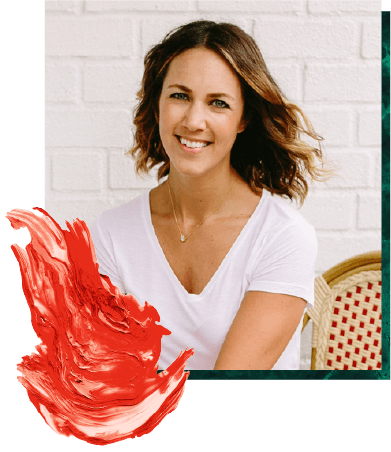
about
Alissa Rumsey, RD.
Alissa Rumsey, MS, RD, CDN, CSCS (pronouns she/her/hers) is a registered
dietitian, nutrition therapist, certified intuitive eating counselor, and the author of
Unapologetic Eating: Make Peace With Food and Transform Your Life. Alissa is
passionate about helping people reclaim the space to eat and live,
unapologetically.
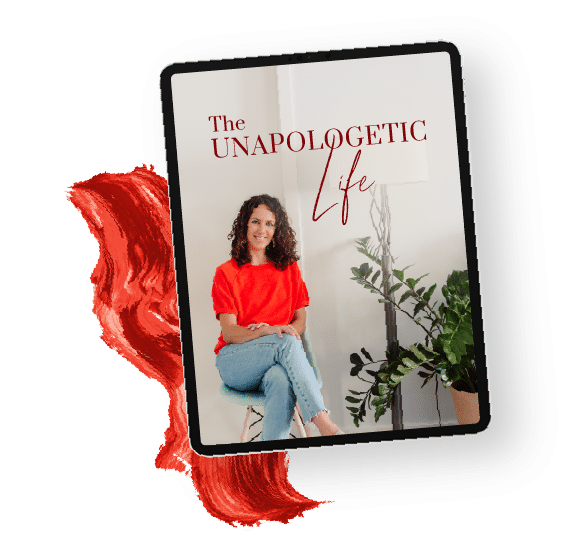
A twice-a-month round-up of inspirational stories, lessons, practical tips and encouragement for living your most authentic, unapologetic life.
The Unapologetic Life
RECENT POSTS
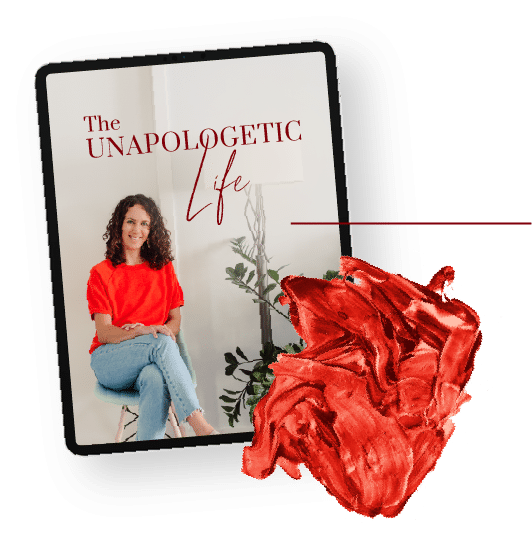
The Unapologetic Life
A twice-a-month round-up of inspirational stories, lessons, practical tips and encouragement for living your most authentic, unapologetic life.






